 W
WAhegao (アヘ顔) is a term in Japanese pornography for an exaggerated facial expression of characters during sex, typically with rolling or crossed eyes, protruding tongue, and slightly reddened face, to show enjoyment or ecstasy. The style is often used in erotic manga, anime, and video games.
 W
WSocial rules typically restrict people's dress according to gender. Trousers were traditionally a male form of dress, frowned upon for women. However, during the 1800s, female spies were introduced and Vivandières wore a certain uniform with a dress over trousers. Women activists during that time would also decide to wear trousers, for example Luisa Capetillo, a women's rights activist and the first woman in Puerto Rico to wear trousers in public.
 W
WAn asymmetric cut is a haircut in which the hair is cut in such a way that the hair does not have left-right symmetry and one side is cut or appears to be longer than the other. It is a versatile hairstyle with many subvariations. Usually it is a combination of two separate styles, one for each side. An extreme variation is the "side shave", in which one side of the head is totally or partially shaved close.
 W
WBogan is Australian and New Zealand slang for a person whose speech, clothing, attitude and behaviour are considered unrefined or unsophisticated. Depending on the context, the term can be pejorative or self-deprecating. The prevalence of the term bogan has also been associated with changing social attitudes towards social class in Australia.
 W
WIn modern use, the term "Bohemian" is applied to people who live unconventional and usually artistic lifestyles. The adherents of the "Bloomsbury Group" was formed around the Stephen sisters, Vanessa Bell and Virginia Woolf. This is the best-known example from the early 20th century. The original "Bohemians" were travellers or refugees from central Europe.
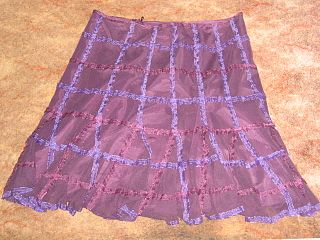 W
WBoho-chic is a style of fashion drawing on various bohemian and hippie influences, which, at its height in late 2005 was associated particularly with actress Sienna Miller, model Kate Moss in the United Kingdom and actress/businesswoman Mary-Kate Olsen in the United States. It has been seen since the early 1990s and, although appearing to wane from time to time, has repeatedly re-surfaced in varying guises. Many elements of boho-chic became popular in the late 1960s and some date back much further, being associated, for example, with pre-Raphaelite women of the mid-to-late 19th century.
 W
WBusiness casual is an ambiguously defined Western dress code that is generally considered casual wear but with smart components of a proper lounge suit from traditional informal wear, adopted for white-collar workplaces. This interpretation typically including dress shirt, necktie, and trousers, but worn with an odd-coloured blazer or a sports coat instead.
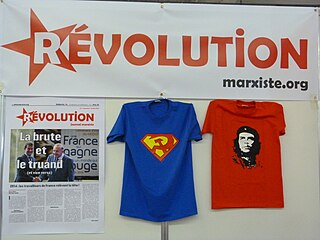 W
WCommunist chic are elements of popular culture such as fashion and commodities based on communist symbols and other things associated with Communism. A typical example is T-shirts and other memorabilia with Alberto Korda's iconic photo of Che Guevara.
 W
WCottagecore is an Internet fashion aesthetic, also described by some sources as a Generation Z subculture, that celebrates an idealised rural life and developed throughout the 2010s until being named on Tumblr in 2018. It values traditional skills and crafts such as foraging, baking, and pottery, and is related to similar nostalgic aesthetic movements such as grandmacore, farmcore, goblincore, and faeriecore. The ideas of cottagecore can help to satisfy for its proponents a desire for "an aspirational form of nostalgia" as well as an escape from many forms of stress and trauma. The New York Times described it as a reaction to hustle culture and the advent of personal branding.
 W
WCycle chic or bicycle chic refers to cycling in fashionable everyday clothes. The fashion concept developed in popular culture to include bicycles and bicycle accessories as well as clothing. The phrase Cycle Chic was coined in 2007 by Mikael Colville-Andersen, who started the Copenhagen Cycle Chic blog in the same year.
 W
WDark academia is a TikTok and Tumblr aesthetic and subculture centered around higher education, writing/poetry, the arts, and classic Greek and Gothic architecture. The subculture is associated with ancient art, and classic literature.
 W
WEmpire silhouette, Empire line, Empire waist or just Empire is a style in clothing in which the dress has a fitted bodice ending just below the bust, giving a high-waisted appearance, and a gathered skirt which is long and loosely fitting but skims the body rather than being supported by voluminous petticoats. The outline is especially flattering to pear shapes wishing to disguise the stomach area or emphasize the bust. The shape of the dress also helps to lengthen the body's appearance.
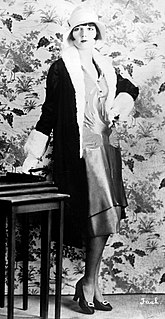 W
WFlappers were a generation of young Western women in the 1920s who wore short skirts, bobbed their hair, listened to jazz, and flaunted their disdain for what was then considered acceptable behavior. Flappers were seen as brash for wearing excessive makeup, drinking alcohol, smoking cigarettes in public, driving automobiles, treating sex in a casual manner, and otherwise flouting social and sexual norms. As automobiles became available, flappers gained freedom of movement and privacy. Flappers are icons of the Roaring Twenties, the social, political turbulence and increased transatlantic cultural exchange that followed the end of World War I, as well as the export of American jazz culture to Europe. There was a reaction to this counter culture from more conservative people who belonged mostly to older generations. They claimed that the flappers' dresses were 'near nakedness', and that flappers were 'flippant', 'reckless', and unintelligent.
 W
WA gamine is a slim, elegant young woman who is, or is perceived to be, mischievous, teasing or sexually appealing.
 W
WThe word geek is a slang term originally used to describe eccentric or non-mainstream people; in current use, the word typically connotes an expert or enthusiast obsessed with a hobby or intellectual pursuit, with a general pejorative meaning of a "peculiar person, especially one who is perceived to be overly intellectual, unfashionable, boring, or socially awkward".
 W
WThe Gibson Girl was the personification of the feminine ideal of physical attractiveness as portrayed by the pen-and-ink illustrations of artist Charles Dana Gibson during a 20-year period that spanned the late 19th and early 20th centuries in the United States. The artist saw his creation as representing the composite of "thousands of American girls".
 W
WGothic fashion is a clothing style marked by dark, mysterious, antiquated and homogeneous features. It is worn by members of the Goth subculture. dress, typical gothic fashion includes dyed black hair, dark lipstick and dark clothing. Both male and female goths can wear dark eyeliner and dark nail polish - most often black. Male goths use cosmetics at a higher rate than other men. Styles are often borrowed from the punk fashion, Victorians and Elizabethans. Goth fashion is sometimes confused with heavy metal fashion and emo fashion.
 W
WGrunge fashion is the clothing, accessories and hairstyles of the grunge music genre and subculture which emerged in mid-1980s Seattle, and had reached wide popularity by the early 2000s. Grunge fashion is characterized by durable and timeless thrift-store clothing, often worn in a loose, androgynous manner to de-emphasize the silhouette. The style was popularized by music bands Nirvana, Soundgarden and Pearl Jam.
 W
WHeroin chic was a look popularized in early-1990s fashion and characterized by pale skin, dark circles underneath the eyes, a very skinny body, dark red lipstick, stringy hair, and an angular bone structure. American "first" supermodel Gia Carangi, is remembered for being the original "heroin chic model" The look, characterised by emaciated features and androgyny, was a reaction against the "healthy" and vibrant look of models such as Cindy Crawford, Elle Macpherson, and Claudia Schiffer. A 1996 article in the Los Angeles Times stated that the fashion industry had "a nihilistic vision of beauty" that was reflective of drug addiction.
 W
WHipster or hepcat, as used in the 1940s, referred to aficionados of jazz, in particular bebop, which became popular in the early 1940s. The hipster adopted the lifestyle of the jazz musician, including some or all of the following: dress, slang, use of marijuana and other drugs, relaxed attitude, sarcastic humble or, self-imposed poverty, and relaxed sexual mores.
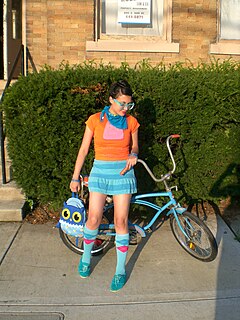 W
WIn the 21st century, a hipster is a member of a subculture that is defined by claims to authenticity and uniqueness yet, ironically, is notably lacking in authenticity and conforms to a collective style. The subculture embodies a particular ethic of consumption which seeks to commodify the idea of rebellion or counterculture. Fashion is one of the major markers of hipster identity. Members of the subculture typically do not self-identify as hipsters, and the word hipster is often used as a pejorative for someone who is pretentious or overly concerned with appearing trendy or fashionable in a non-mainstream way. Stereotypical elements include vintage clothes, alternative fashion, or a mixture of different fashions, often including skinny jeans, checked shirts, knit beanies, a full beard or deliberately attention-grabbing moustache, and thick-rimmed or lensless glasses.
 W
WIvy League is a style of men's dress, popular during the late 1950s in the Northeastern United States, and said to have originated on college campuses, particularly those of the Ivy League. It was the predecessor to the preppy style of dress.
 W
WLa Sape, an abbreviation based on the phrase Société des Ambianceurs et des Personnes Élégantes and hinting to the French slang word sape which means "clothes" or sapé, which means "dressed up", is a subculture centered on the cities of Kinshasa and Brazzaville in the Democratic Republic of the Congo and Republic of Congo respectively. An adherent of La Sape is known as a sapeur or, if female, as a sapeuse. The movement embodies the elegance in style and manners of colonial predecessor dandies.
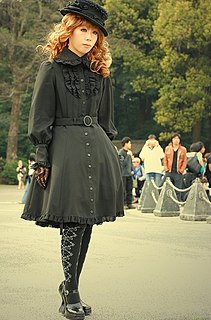 W
WLolita fashion is a subculture from Japan that is highly influenced by Victorian clothing and styles from the Rococo period. A very distinctive property of Lolita fashion is the aesthetic of cuteness. This clothing subculture can be categorized into three main substyles: 'gothic', 'classic', and 'sweet'. Many other substyles such as 'sailor', 'country', 'hime' (princess), 'ero' (erotic), 'guro' (grotesque), 'qi' and 'wa', 'punk', 'shiro' (white), 'kuro' (black), and 'steampunk' lolita also exist. This style evolved into a widely followed subculture in Japan and other countries in the 1990s and 2000s and may have waned in Japan as of the 2010s as the fashion became more mainstream.
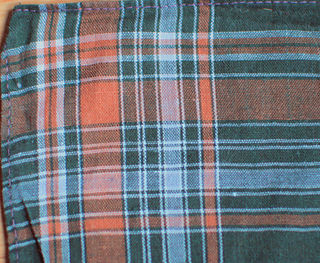 W
WMadras is a lightweight cotton fabric with typically patterned texture and tartan design, used primarily for summer clothing such as pants, shorts, dresses, and jackets. The fabric takes its name from the former name of the city of Chennai in south India.
 W
W"Radical chic" is a term coined by journalist Tom Wolfe in his 1970 essay "Radical Chic: That Party at Lenny's" to describe the adoption and promotion of radical political causes by celebrities, socialites, and high society. In languages such as American English, French and Italian the term has become widely used to indicate people identifying themselves as socialists or radical leftists while conducting upper-class lifestyles.
 W
WStilyagi were members of a youth counterculture from the late 1940s until the early 1960s in the Soviet Union. A stilyaga, was primarily distinguished by snappy clothing—preferably foreign-label, acquired from fartsovshchiks—that contrasted with the communist realities of the time, and their fascination with zagranitsa, modern Western music and fashions corresponding to that of the Beat Generation. English writings on Soviet culture variously translated the derogatory term as "dandies", "fashionistas", "beatniks", "hipsters", "zoot suiters", etc.
 W
WZef is a South African counter-culture movement. Kyle Hans Brockmann has compared zef counter-culture to many similar anarchic sub-cultures in the northern hemisphere.